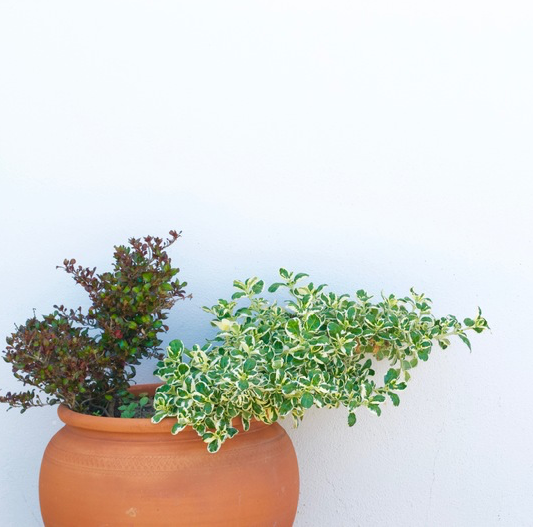Blog
On constant stimulation, why you feel jumpy when you put down your phone, and a concept I invented
Today, I wanted to share about Stimulation Differentials.
“Stimulation Differentials” is a term I invented. They’re helpful for understanding why you might use technology or food in a way that doesn’t serve you — or why you’re a bit anxious… all the time.
Here’s the idea:
Going from a high-stimulation environment to a low-stimulation environment (e.g., going across a “stimulation differential”) can feel uncomfortable or agitating in our bodies, especially if we’re not accustomed to making this transition.
And in 2021, many of us are extremely unaccustomed to making this transition.
Let me say more:
Our bodies get revved up, to some degree, when we do something with more stimulation. So once we take that stimulation away, our bodies are still revved up.
Here are examples of when this can happen:
You’re checking Instagram on your phone (higher stimulation)…and you turn it off (lower stimulation).
You’ve been at work (higher stimulation — you had a lot to think about, and people to interface with), and you just got home (lower stimulation).
You go from exploring the supermarket (higher stimulation) to waiting in line to check out (lower stimulation — fewer things to explore, do, and think about).
If you’re not accustomed to the process of calming your nervous system, then suddenly noticing all of these stimulating body sensations can feel surprising and disorienting. You may feel uncomfortable, agitated, or jumpy — like you want to jump out of your skin.
Or maybe you never notice the Stimulation Differential at all — you just notice that you need to take out your phone and check something when you have a minute of time in between activities. You notice that you need to eat a cookie as soon as you come home from work every day.
In 2021, many of us almost never bridge the Stimulation Differential but rather keep ourselves chronically stimulated, because we are afraid of the slight discomfort of being more stimulated than our environment.
But this is a serious loss because those moments of emptiness and lower stimulation are when:
Our brains truly recover — so we can approach our next task with the maximum amount of focus and creativity.
We get intentional about our next action, rather than simply reactive.
We have insights about what we truly want in life.
We recover and find the spaciousness, grounded-ness, and calm that so many of us yearn for.
When my 1:1 coaching clients tell me that they’re chronically a little bit anxious or they don’t know what they want from life, one thing I often explore is whether they are allowing themselves to come down — to truly land in a lower-stimulation environment.
Or are they just keeping themselves stimulated all of the time?
If we’re constantly stimulated all of the time, how can we expect to feel calm, less anxious, or clearer on our lives?
…
I saved the best news for last:
Once you get accustomed to bridging the Stimulation Differential…it’s actually not so uncomfortable.
You just know that, for example, at the end of your workday you are a little revved up. So you need to let your body come down by — perhaps — reading a book for a half hour (rather than going on the internet, which would also be stimulating).
Which is to say: what’s hard about Stimulation Differentials actually is significantly reduced by practice.
So this week, I’ll ask: are you avoiding bridging your Stimulation Differentials? If so, how’s that working for you?
I’m in your corner rooting for you.
Katie
Sign up for my newsletter to get helpful + encouraging essays like this every Sunday morning. It’s free!
Struggling with compulsion? Try these 4 things
Let’s talk about compulsion.
Maybe you’re already thinking to yourself, Well, I guess this post isn’t for me. I mean, I’m not perfect, but I’m not *compulsive* about anything.
I want to acknowledge that the word “compulsion” might seem scary or intense. It might make you think of people in tattered clothing, in dark alleys, doing things that might eventually lead to their death.
And yet, here’s the Oxford English Dictionary definition:
Compulsion (n): an irresistible urge to behave in a certain way, especially against one's conscious wishes: he felt the compulsion to babble on about what had happened.*
I think there’s two really important elements to this definition:
You feel an irresistible urge to act in a certain way
Acting in that way is against your conscious wishes
Using this (correct) definition of “compulsion,” even if you aren’t a compulsive heroin user, you might still be compulsive. In fact, I would say that the majority of people I know — including both clients and friends — are compulsive about one or both of the following things:
Eating
Technology usage
Ever promise yourself you wouldn’t eat any more brownies, and then find yourself grabbing a little bite (or a big one) every time you walk by a plate of ‘em? Ever find yourself checking your social media, even though you really need to get that report or presentation done?
That’s an everyday, bread-and-butter, salt-of-the-earth compulsion. No, you’re not in a dark alley in tattered clothing. Yes, you are behaving compulsively.
You might be thinking: okay, who cares if we use the word “compulsive” or not? But I would argue that it matters a lot.
If we don’t use the word “compulsive,” then we’ll be either confused or frustrated with ourselves. Like: “Wow, it’s so weird that I keep eating these brownies even though I promised myself that I’d stop because I’ve already had four.” Or: “Self, you promised you’d stop checking Instagram! But you keep doing it! What’s up with that?!!”
But both confusion and anger are unhelpful reactions in the face of irresistible urges that are against your conscious wishes. (Remember, that’s the definition of “compulsion”)
The whole point of compulsion is that you didn’t intend to do them. In fact, you’d strongly prefer not to do them!
But most of us have been either “confused” or “frustrated” with our compulsive behavior for years or even decades. Sometimes we resolve to change, and sometimes those resolutions work…for a while. Then they stop working because, uh, we feel irresistible urges that are against our conscious wishes! (Are you remembering the definition of “compulsion” yet?)
The only thing that actually works, in the face of compulsion, is curious and kind exploration. Exploration can be about many things, but here are some of the biggies:
1. What are the things in my life that trigger this compulsive behavior?
It might be actions – like being at a party, or arriving home to an empty house — or it might be feelings or thoughts – like feeling tired but wanting to get more work done.
2. What does it feel like, in my body, when I have that compulsion?
Most people initially describe a compulsive experience as “being in a trance,” so their initial impression is that compulsion feels like nothingness.
But when you actually explore it more deeply, 95% of the time** compulsion is actually extremely intense in the body. People feel a lot of sensations – like buzzing or zinging — in various parts of their body. Some people tell me, “I felt like I could scream,” or “It felt like I might explode.”
3. When those feelings come up, what would it feel like to sit with them instead of immediately doing that compulsive thing?
What would it be like to sit with those feelings for 60 seconds? For 120 seconds? For five minutes, or 10? When you are very experienced with this, you typically find that it feels very intense at first (see above), and then it becomes significantly less intense. (Here’s an example of one time I did that in exploring my own compulsions around technology.)
4. What else could I do to satisfy the thing that brought on my compulsive behavior?
If you think that eating too many brownies or checking Instagram too much is about your love of brownies or Instagram, then you’ll make all kinds of intense promises about sugar or internet usage.
But if you realize that it’s about something deeper — and usually it’s not just one thing, but a constellation of many things; sometimes it’s feeling tired, sometimes it’s feeling insecure, sometimes it’s that you are happy (even happiness can sometimes be very intense!) — then you can actually address the many, complex roots of the problem.
Then you can stop being confused or frustrated, and start being effective.
One last thing: that list of four things to do to “explore” your compulsion? It’s easy for me to write it, but it’s really friggin’ hard to actually do it. It might feel, at times, extremely painful or intense. It might be one of the hardest things you ever do.
I don’t say that to intimidate you. The work is 1,000% worth it, in my experience. But I say that so if you struggle, you won’t be surprised.
As always, I’m sending you strength + support for the week ahead. You’ve got this.
Katie
* This is actually the secondary definition of compulsion. The first definition has to do with “the action or state of forcing or being forced to do something,” for example, “the payment was made under compulsion.” But here, obviously, we’re not talking about that form of compulsion, like where a mob boss is forcing you to pay her $1 million or she’ll kill your firstborn.
**This percentage is based on my personal and professional experience, but not a scientific study :)
If this essay resonated with you, you'll love my newsletter. Sign up for free + get new ideas every Sunday!


